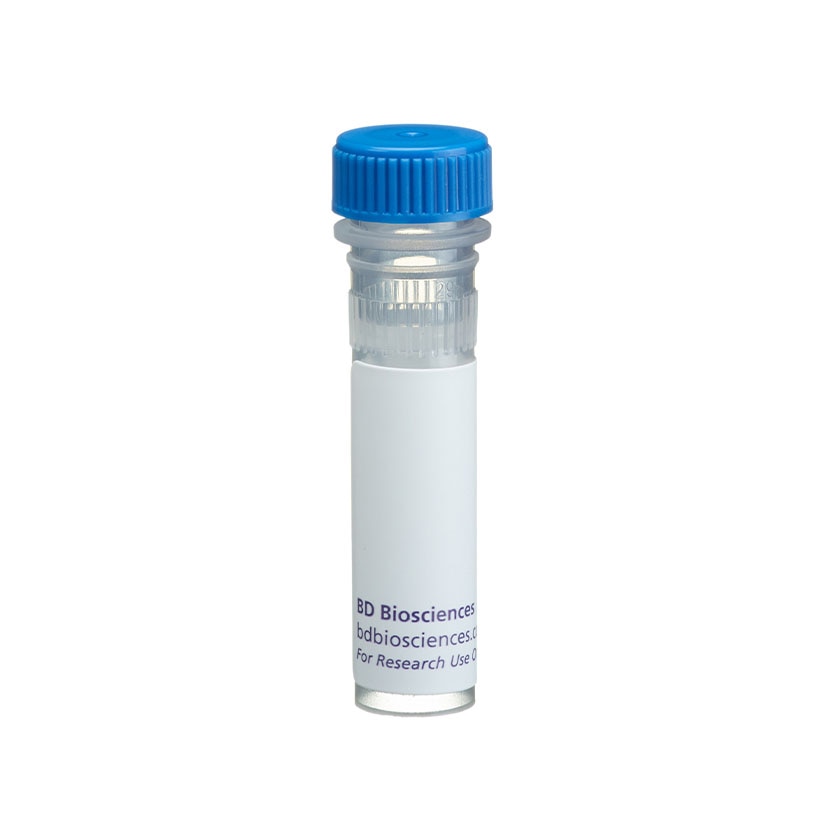Old Browser
This page has been recently translated and is available in French now.
Looks like you're visiting us from {countryName}.
Would you like to stay on the current country site or be switched to your country?




from Raji cells (ATCC CCL-86) was probed with Purified Mouse anti-BLNK monoclonal antibody at 2 µg/ml. BLNK is identified as a band of 68 kDa.


BD Pharmingen™ Purified Mouse anti-BLNK

Regulatory Status Legend
Any use of products other than the permitted use without the express written authorization of Becton, Dickinson and Company is strictly prohibited.
Preparation And Storage
Recommended Assay Procedures
This purified antibody is routinely tested by western blot. Lysates from Raji B cells (ATCC CCL-86) are recommended as a positive control. We recommend the conjugated antibody formats PE, Alexa 488, and Alexa 647 (Cat. nos. 558688, 558693, and 558692, respectively) for intracellular staining with flow cytometric analysis.
Product Notices
- Please refer to www.bdbiosciences.com/us/s/resources for technical protocols.
- Since applications vary, each investigator should titrate the reagent to obtain optimal results.
- Caution: Sodium azide yields highly toxic hydrazoic acid under acidic conditions. Dilute azide compounds in running water before discarding to avoid accumulation of potentially explosive deposits in plumbing.
B cell activation is initiated by crosslinking the B cell receptor, which leads to activation of non-receptor protein tyrosine kinases (PTK), including Btk, Syk, and three Src kinases, Fyn, Lyn, and Blk. Activated PTKs then phosphorylate multiple cellular proteins involved in B lymphocyte signaling. Syk is responsible for the tyrosine phosphorylation of B cell linker protein (BLNK), a member of the SLP-76 family of adapter proteins. Phosphorylation of human BLNK at tyrosines 84, 178, and 189 (Y84, Y178, and Y189) creates docking sites for PLCγ2, leading to the activation of downstream signaling pathways.
The 2B11 monoclonal antibody recognizes BLNK, regardless of phosphorylation status. A fusion protein representing amino acids 4-205 of human BLNK was used as the immunogen. BLNK is expressed as two phosphoproteins migrating at 68 and 70 kDa in SDS/PAGE that represent alternatively spliced forms of human BLNK.
Development References (6)
-
Chiu CW, Dalton M, Ishiai M, Kurosaki T, Chan AC. BLNK: molecular scaffolding through 'cis'-mediated organization of signaling proteins. EMBO J. 2002; 21:6461-6472. (Clone-specific: Western blot).
-
Janssen E, Zhang W. Adaptor proteins in lymphocyte activation. Curr Opin Immunol. 2003; 15:269-276. (Biology: Activation). View Reference
-
Li X, Martin F, Oliver AM, Kearney JF, Carter RH. Antigen receptor proximal signaling in splenic B-2 cell subsets. J Immunol. 2001; 166:3122-3129. (Clone-specific: Western blot).
-
Minegishi Y, Rohrer J, Coustan-Smith E, et al. An essential role for BLNK in human B cell development. Science. 1999; 286:1954-1957. (Immunogen).
-
Taguchi T, Kiyokawa N, Takenouch H, et al. Deficiency of BLNK hampers PLC-γ2 phosphorylation and Ca2+ influx induced by the pre-B-cell receptor in human pre-B cells. Immunology. 2004; 122:575-582. (Clone-specific: Flow cytometry, Western blot).
-
Wu JN, Koretzky GA. The SLP-76 family of adapter proteins. Semin Immunol. 2004; 16:379-393. (Biology). View Reference
Please refer to Support Documents for Quality Certificates
Global - Refer to manufacturer's instructions for use and related User Manuals and Technical data sheets before using this products as described
Comparisons, where applicable, are made against older BD Technology, manual methods or are general performance claims. Comparisons are not made against non-BD technologies, unless otherwise noted.
For Research Use Only. Not for use in diagnostic or therapeutic procedures.
Report a Site Issue
This form is intended to help us improve our website experience. For other support, please visit our Contact Us page.